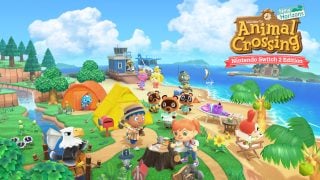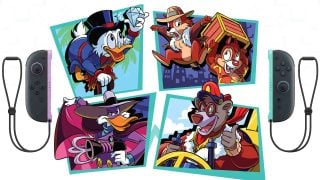With Cloud’s recent Super Smash Bros. reveal, it’s no doubt that Final Fantasy has been on every Nintendo fan’s mind lately. Many have questioned why Cloud’s appearance makes any sense, and there have been mixed reactions about the entire ordeal. We’ve already gone over our thoughts on the reveal and why we believe he deserves to be in the game, but with all this Final Fantasy talk I couldn’t help but think even further into Final Fantasy and Nintendo’s relationship.
In February of 2004, Final Fantasy: Crystal Chronicles was released in North America exclusively on the GameCube. While not directly related to the Final Fantasy series, the game was a spinoff that saw extremely positive reviews and spawned an entire metaseries that included five other games.
The game was extremely experimental, and many Final Fantasy fans at the time were probably hesitant about playing it. For one, making it a GameCube exclusive game was definitely an interesting choice for Square Enix, though a necessary one considering the multiplayer aspects. But with no real connection to the main series other than the name, fans probably questioned what this game even was at all.
For one, Crystal Chronicles introduced the concept of real-time combat to the Final Fantasy world, instead of the traditional turn-based combat that most RPGs had in the past. Additionally, the game was the first role-playing game to incorporate GameCube-Game Boy Advance compatibility, and was probably one of the first games to experiment with dual-screen experiences, using that compatibility. While simple, the idea was innovative, especially considering how implemented it has become in so many of Nintendo’s later games and consoles. This compatibility was used in multiplayer, allowing each player their own inventory, stats and map screen. And while this did require everyone who wanted to play to have a GBA, the idea itself was quite creative and convenient (until the dreaded “red power light” reared its ugly head).
Taking place in an unnamed world, the story follows the player (or players) as part of what’s called a “crystal caravan”– a group of travelers that harvest myrrh from myrrh trees around the land, to replenish their town crystal’s protective capabilities. Although it may sound a bit complicated, in execution it wasn’t particularly, and allowed for very focused and interesting gameplay that was so vastly different from anything we’d ever seen. But it worked, and it worked well. Like other RPGs, the game featured a lot of exploration that involved experiencing new areas and collecting items and materials to create new weapons and armor, as well as interacting with NPCs to discover the lore behind the game’s plot.
When you weren’t exploring, you were fighting, and as mentioned earlier, combat involved no transition to a separate screen. Another interesting change they made was that each of the four races you can play as was able to use all types of attack, rather than making certain things exclusive to certain classes. However, particular races were more skilled in different stats.
As a Nintendo game, Crystal Chronicles was also important in that it was the first Final Fantasy game to be released for a console since 1994. With this return to Nintendo home systems, it marked a possible return for the main games as well, and showed fans that Square Enix and Nintendo were still in the works with each other. Despite the confusion caused by the departure from other Final Fantasy Games, it really was quite impactful. The graphics were absolutely stunning, especially for the time period the game came out, and the world that Square Enix created was beautiful, engaging and mysterious. I still consider the game to be one of the most visually amazing on the GameCube to date, and paired with the incredible and intense music for each area, the experience of playing Crystal Chronicles is not one easily forgotten.
Personally, I think this title was a great way to reintroduce Final Fantasy to Nintendo consoles, as it was so easily accessible even to non-Final Fantasy players it had potential to draw in new fans. I can say from my own experience as someone who had never played a Final Fantasy game prior to this that as a game tailored for multiplayer, some of my best memories from the GameCube era came from playing this game with my friends and my brother for hours.
Fun, simple, highly addictive and full of detail, it’s no surprise that Crystal Chronicles spawned a legacy of its own. It provided a challenge and required strategy, but was still easy enough to grasp that virtually any player could pick it up.
Despite its spinoff status, I think it’s safe to say that Crystal Chronicles was a great example of the strength between Nintendo and Square Enix’s relationship (if anyone was questioning it in the first place). And as a fully fleshed out game, I give the company full praise for making this experiment something outstanding, especially when they were setting themselves up for a lot of potential backlash.
Source: Final Fantasy: Crystal Chronicles GameCube + GBA image via Old School Junkie.
Leave a Comment




